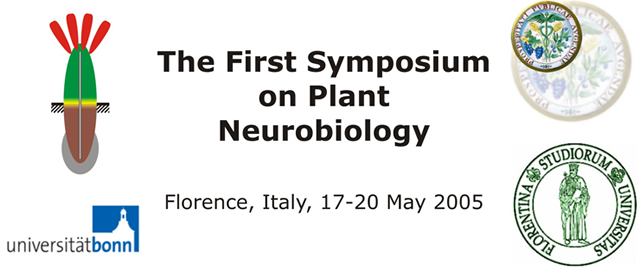
 |
| Neurobiological View of Plants and Their Body Plan |
| František Baluška1,*, Stefano Mancuso2, Dieter Volkmann1, and Peter W. Barlow3 |
|
1 IZMB, University of Bonn, Kirschallee 1, D-53115 Bonn, Germany 2 Dept. Horticulture, University of Firenze, Viale delle idee 30, 50019 Sesto F.no (FI), Italy 3 School of Biological Sciences, University of Bristol, Bristol BS8 1UG, UK |
| *email: baluska@uni-bonn.de |
|
In the
centuries following the time of Aristotle and his students, who made the first philosophical attempts to
understand plants in their complexity, interest in herb plants was limited mainly to their medical usage. This
changed in the sixteenth century when the first biological attempts were done to understand the basic
principles of structure and function of plants. At first, studies were largely devoted to plant distribution,
taxonomy, and morphology. Later, taking the lead from medicine, anatomy and cytology of plants were added to
the curriculum of plant sciences, as studied in the early universities. In fact, the cellular nature of living
organisms was first elaborated using plants (Hooke 1665). By the end of the 19th century, it was realised that
plants were even more similar to animals than had been thought hitherto. Advances in physiology helped confirm
this, especially with regard to some of the basic physiological processes, such as respiration, digestion, and
cell growth, where plants often provided the material of choice for experimental studies. All principal
metabolic biochemical pathways are conserved in both animal and plant cells. As a big surprise, plants have
been shown to be identical to animals from several other rather unexpected perspectives. For their
reproduction, plants use identical sexual processes based on fusing sperm cells and oocytes. Next, plants
attacked by pathogens develop immunity using the corresponding processes and mechanisms operating in animals.
Last but not least, both animals and plants use the same molecules and pathways to drive their circadian
rhythms. Currently, plant science has reached another cross-road as the critical mass of new data has been accumulated, culminating in the emergence of plant neurobiology as the most recent area of plant sciences. Plants are intelligent organisms which perform complex information processing (Trewavas 2003, 2004) and which use not only action potentials but also synaptic modes of cell-cell communication(Baluška et al. 2003, 2004, 2005). Thus, the term `plant neurobiology` appears to be justified. In fact, the word neuron was taken by animal neurobiologists from Greek where the original meaning of this word is vegetal fibre. Moreover, there are several surprises if we apply a `neurobiological` perspective to how the plant tissues and body are organized. Auxin emerges as a plant-specific neurotransmitter (Baluška et al. 2003). Root apices are specialized not only for the uptake of nutrients but also seem to support neuronal-like activities based on plant synapses (Baluška et al. 2004, 2005). All this suggests that root apices represent the anterior pole of the plant body. In accordance with this perspective, shoot apices act as the posterior pole. They are specialized for sexual reproduction and the excretion of metabolic products via hydatodes, trichomes, and stomata. Next, vascular elements allow the rapid spread of hydraulic signals and action potentials, resembling nerves. As plants are capable of learning and they take decisions about their future activities according to the actual environmental conditions (Trewavas 2003, 2004), it is obvious that they possess a complex apparatus for the storage and processing of information.
|
| [Back] |
Last Update on 06-06-05 by Andrej |
|